List of cultural icons of Portugal
This list of cultural icons of Portugal is a list of links to potential cultural icons of Portugal.[1][2][3][4]
Animals
Books and documents
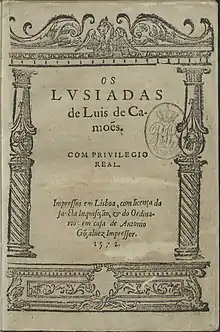
Camões' Os Lusíadas
- 1822 Constitution
- 1826 Constitutional Charter
- 1838 Constitution
- 1911 Constitution
- 1933 Constitution
- 1976 Constitution
- Charter of Law of Abolition of the Death Penalty, abolished the death penalty for civil crimes in 1867 (it had already been abolished for political crimes in 1852 and persisted for war crimes until 1911)[5]
- Os Lusíadas
- Os Maias
- Manifestis Probatum papal bull
- Mensagem
- Treaty of Tordesillas
- Treaty of Zamora
Buildings and structures
- 25th April Bridge
- Alcobaça Monastery
- Aqueduct of the Free Waters
- Batalha Monastery
- Belém Tower
- Bom Jesus do Monte Sanctuary
- Casa da Música
- Castle of Guimarães
- Castle of Óbidos
- Clérigos Church
- Convent of Christ, Tomar
- Dom Luís I Bridge
- Jerónimos Monastery
- Johannine Library
- Lisbon Baixa
- Manueline style, a type of late gothic
- Mateus Palace
- Pena Palace
- Roman Temple of Évora
- Monument of the Discoveries
- Palace of Mafra
- Sanctuary of Fátima
- São Bento railway station
- São Jorge Castle
Crafts
- Azulejo, usually blue-hued tiles
- Cork work
- Portuguese chair or Gonçalo chair[6]
- Portuguese pavement, mosaic sidewalk
- Portuguese faience
- Portuguese filigree
- Arraiolos rug
- Madeira embroidery
Education
Emblems

Flag of Portugal
Festivals
- Santos Populares (Popular Saints celebrations)
Film
Folk tales
- Brites de Almeida, the Baker of Aljubarrota
- Rooster of Barcelos
- Vímara Peres
- Viriathus
Food and drink
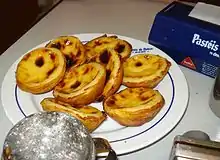
Pastéis de nata or pastéis de Belém (cream custards)
- Alheira (a sausage made with poultry or wild game and dried bread)
- Bacalhau (codfish)
- Bulhão Pato clams
- Caldo verde (a collard greens soup with chouriço)
- Canned fish
- Cataplana
- Chouriço
- Cozido à portuguesa (literally Portuguese stew)
- Feijoada à portuguesa (literally Portuguese bean stew)
- Francesinha sandwich
- Gaspacho
- Ginjinha (sour cherry liquor)
- Madeira wine
- Moscatel de Setúbal
- Ovos moles (soft eggs)
- Pastel de nata or pastel de Belém (Belém or custard tart)
- Port wine
- Roasted suckling pig
- Sardine
- Serra da Estrela cheese
- Snail
- Sopa de pedra (literally stone soup)
- Tremoços (lupin beans)
- Tripas à moda do Porto (tripe in Porto's style)
Holidays
- Freedom Day (see Carnation Revolution)
- Day of Portugal, Camões, and the Portuguese Communities Day
- Republic Day
- Restoration of Independence Day
Paintings
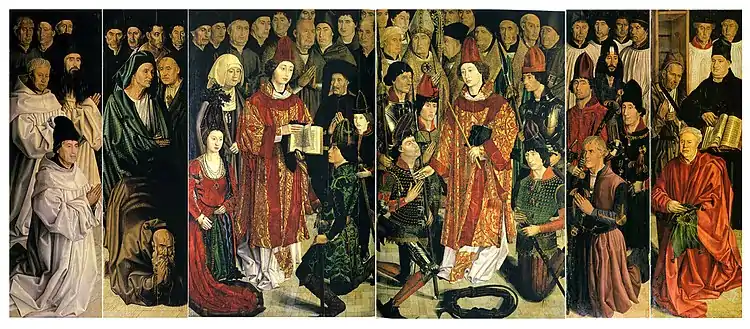
Saintq Vincent Panels by Nuno Gonçalves
- Saint Vincent Panels, by Nuno Gonçalves
- O Fado, by José Malhoa
Periodicals
People
Architects
Artists
Athletes
Explorers
Military heroes
Philosophers
Rulers and politicians
- Afonso I of Portugal, the first king of Portugal
- Denis of Portugal
- Sebastian of Portugal, the "king asleep" (see sebastianism)
- Marquis of Pombal, the Prime Minister who rebuilt Lisbon after the 1755 earthquake
Religion
Scientists
- Antonio Damasio
- Egas Moniz
TV and radio
Sports
Transport
- Caravelas
- Moliceiros
- Naus
- Trams in Lisbon and in Porto
- Rabelo boats
Miscellaneous
References
- "O galo, o Zé Povinho e o caldo verde. Breve história de 60 ícones bem portugueses" [The rooster, the Zé Povinho and the caldo verde. Brief story of 60 very Portuguese icons] (in Portuguese). Jornal i. 10 June 2019. Retrieved 24 May 2020.
- Steves, Rick (2019). Rick Steves Portugal. United States: Avalon Travel Publishing. pp. 3–21. ISBN 978-1641710961.
- "Portugal's Top 10 Cultural Features". Visit Portugal. Retrieved 24 May 2020.
- Simão, Bruno (4 June 2016). "Estes são alguns dos ícones de Portugal" [These are some of Portugal's icons] (in Portuguese). Público. Retrieved 24 May 2020.
- "Welcome". 150 Years of the Abolition of the Death Penalty in Portugal. Direção-Geral do Livro, dos Arquivos e das Bibliotecas. Retrieved 24 May 2020.
- Dantas Ferreira, Rita (17 March 2019). "A cadeira portuguesa, a nossa obra-prima" [The Portuguese chair, our masterpiece] (in Portuguese). Observador. Retrieved 24 May 2020.
This article is issued from Wikipedia. The text is licensed under Creative Commons - Attribution - Sharealike. Additional terms may apply for the media files.
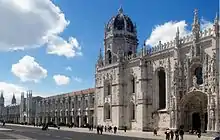

.jpg.webp)
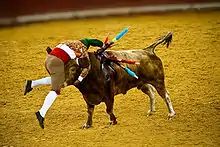
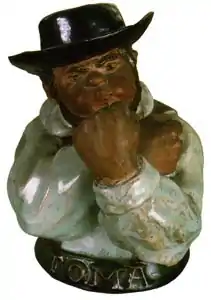
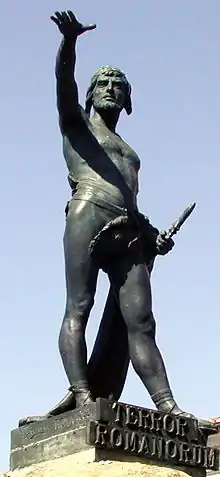
.jpg.webp)
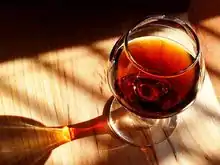
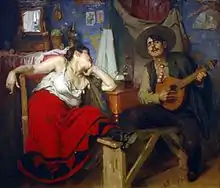

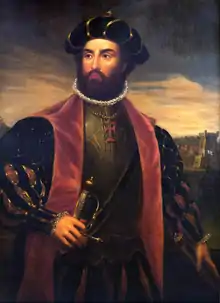
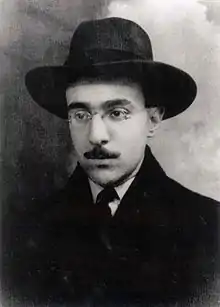
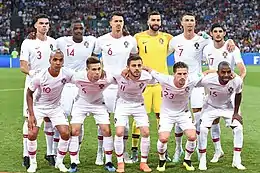
.png.webp)